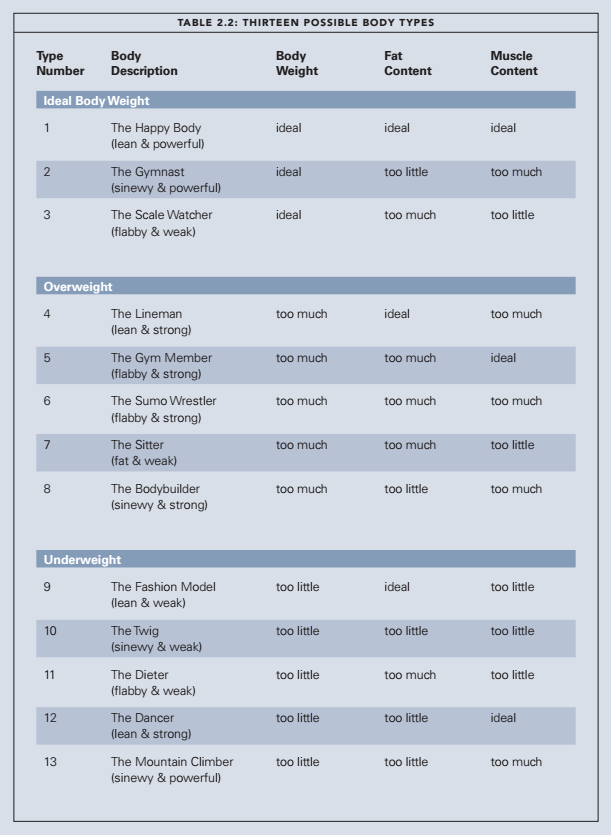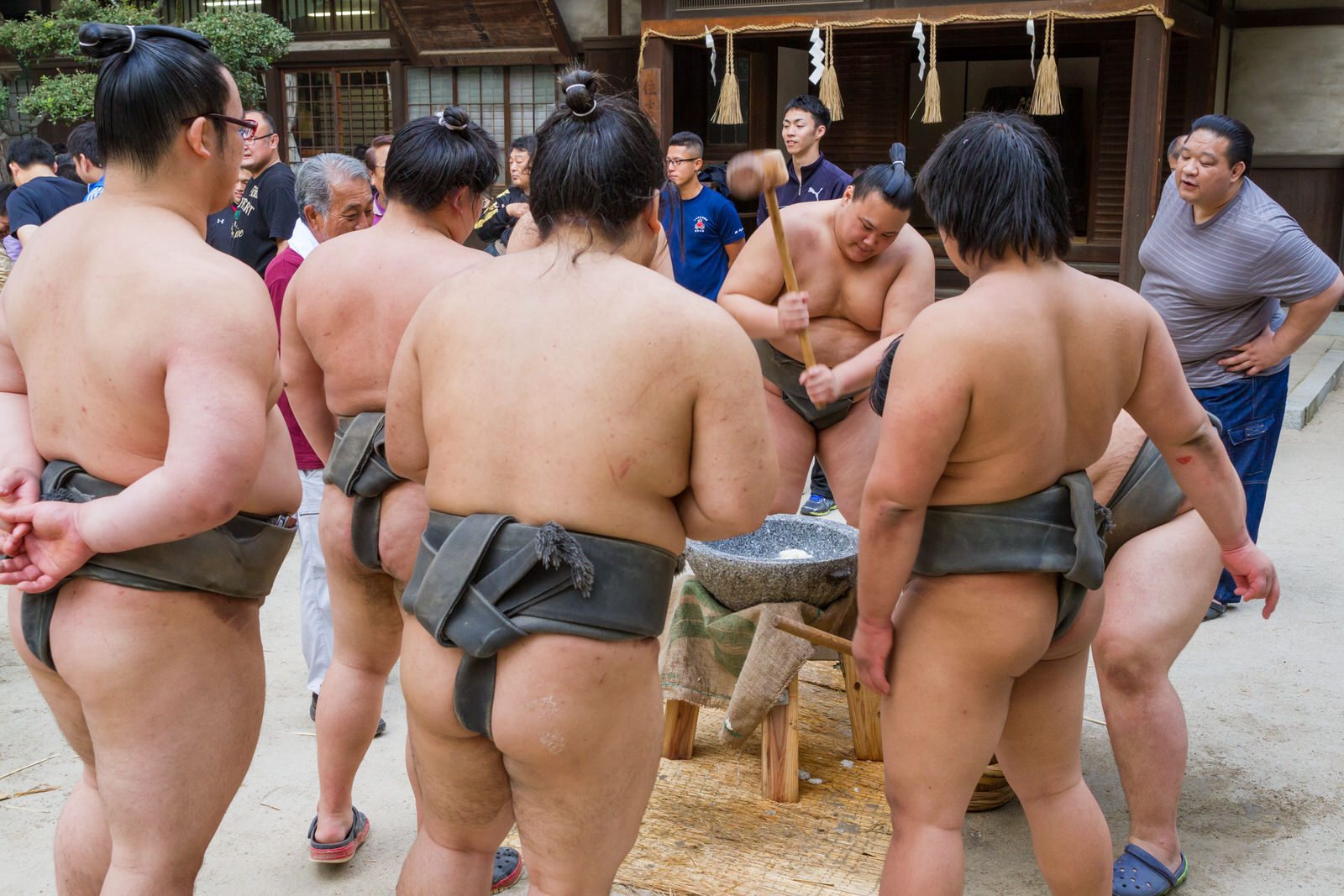But let me make it perfectly clear that in no way is suffering necessary to find meaning. I only insist that meaning is possible even in spite of suffering–provided, certainly, that the suffering is unavoidable. If it were avoidable, however, the meaningful thing to do would be to remove its cause, be it psychological, biological or political…
-Viktor Frankl
Whatever our past has been—how we are physically, emotionally, intellectually, and spiritually—is manifested in the present. And that’s what we see when people come to us for mentoring—we immediately see their past. The physical manifestation is there in the form of pains, asymmetry, extra fat, atrophied muscle, bad posture, etc. But everyone is a little different, so we articulated the thirteen body types in our book to describe the variety of body composition in the population.

Although you can’t change your height (this is a fixed characteristic) your body composition is malleable, and you’re in control of it. There are three groups that people fall into, as described in The Happy Body: Ideal Weight, Overweight and Underweight. And there are variations in the fat and muscle ratio in all categories, the result of lifestyle, making up the thirteen body types: the Happy Body; the Gymnast; the Scale Watcher; the Lineman; the Gym Member; the Sumo Wrestler; the Sitter; the Bodybuilder; the Fashion Model; the Twig; the Dieter; the Dancer; and the Mountain Climber.

The body types are stereotypical images, but they also give you an accurate picture of where you’re starting from, which is often based on your preferences and emotional makeup. The most common type is The Sitter, someone who’s overweight with extra body fat and not enough muscle, an organic result from sedentary living. Someone who’s the ideal weight and eats a controlled amount of healthy food but never exercises or exercises randomly is going to end up with too little muscle, a type known as the Scale Watcher.

Most people who come to us have already put a lot of energy into becoming fit. Yet they end up with unwanted results, and Helen is a typical example of this. When she first came she told me with pride that she’d been exercising for twenty years and that she went to the gym at least five days a week. Yet she complained of pains, low energy, and she was clearly overweight despite eating a healthful diet. She certainly did have ideal muscle mass but she wasn’t lean, so she fell into the category 5 body type: the Gym Member, who has too much weight, too much fat, and ideal muscle mass.

What was she doing wrong? First, eating a healthful diet is no guarantee that you’re not overeating in volume and consequently getting fat. We call this “healthy indulgence.” Second, she was doing too much endurance exercise, wearing out her cartilage and exhausting herself. She was suffering, both emotionally and physically, because she worked hard but wasn’t achieving what she wanted.
Most people are random in their approach to fitness; they aren’t conscious of how their actions manifest results. They may frequently change their workout to their current state of mind and liking. As coaches, we’re most interested in performance, whether in food consumption, exercise, or in the relaxation technique. Every component of the program must bring results.
Jerzy and I witnessed for years how people suffered because they didn’t know how to achieve what they wanted. By educating people, showing them the right kind of exercise, food and relaxation and how much of each is enough, we made that suffering avoidable and gave them control over who they could become. Less suffering means more happiness, and on that note, enjoy Ed Sheeran’s take on body shape in “Shape of You”:
DEEPER CONTEMPLATION
Do you know what type you are? Have you shifted over time?
Where do you suffer unnecessarily? Can you change one lifestyle habit that would point you towards becoming a Happy Body more quickly? Is there one lifestyle habit that you’ve mastered to the neglect of the others?
Leave your response below in the comments.


